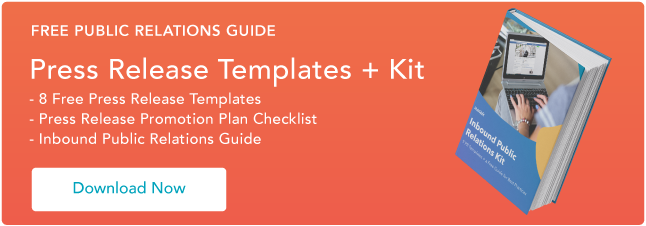
You’ve worked your socks off to get as much press coverage as possible. You’ve created blog posts, been included in news articles, and even made an appearance in a few features. A successful campaign is something to be proud of, so sit back for a minute and admire the fruits of your labour.
Done? Now it’s back to business.
Squeezing every bit of value out of a PR campaign is something very few of us actually do. It’s very easy to call a close on proceedings once the press grab hold of your campaign, but there are a still a few things you can do to turn your PR campaign from 90% to 100% effective.
Check out these seven helpful tips for becoming the ultimate PR completionist below.
7 Ways to Get More Value From Your PR Campaigns
1) Add extra SEO value to organic coverage.
If all goes to plan once you’ve sold your press release into the media, your story will gain traction — and consequently get picked up by more and more media outlets. Some of this you’ll be expecting, some you won’t. This is a happy side effect of a successful PR campaign. And to ensure you don’t miss any of this coverage, we suggest checking out Fresh Web Explorer and Google News.
Fresh Web Explorer is a tool created by Moz that lists any recent pages that feature a keyword you input into the search bar. Whilst it doesn’t track every mention, it’s a good barometer for how successful your initial campaign has been.
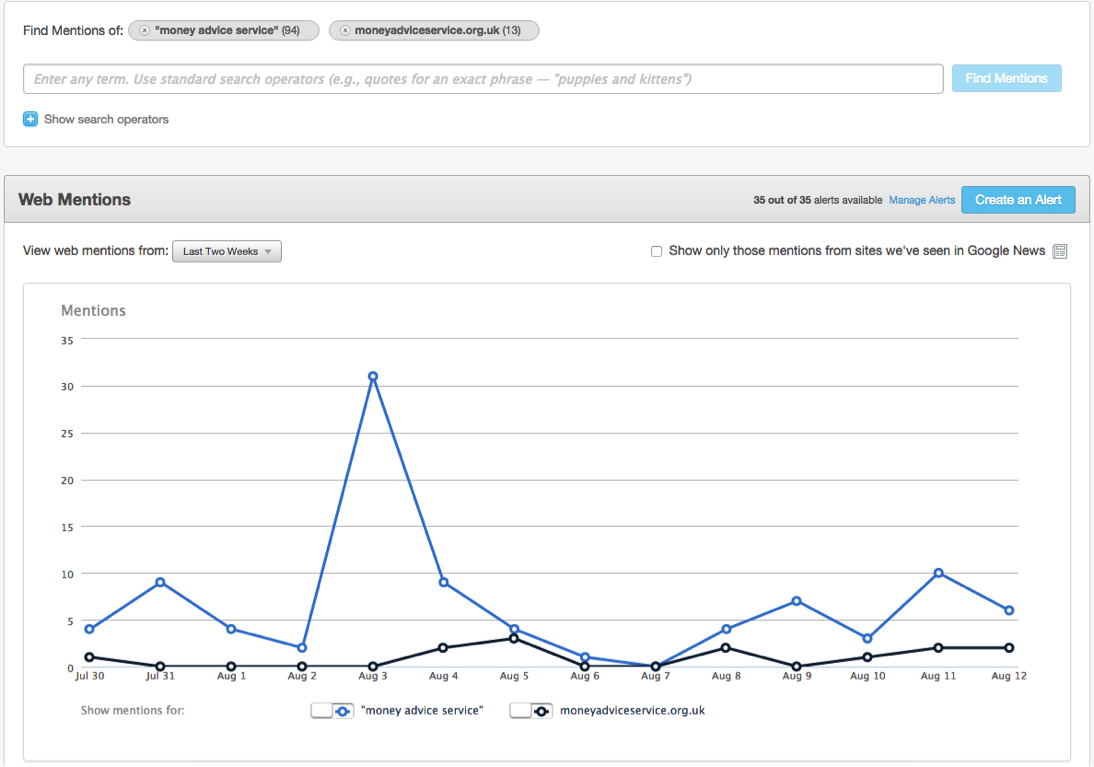
It works best using a variety of keywords. The above graph displays the mentions for the keywords “Money Advice Service” and “moneyadviceservice.org.uk.” As you’ll notice, we can clearly see the date where the press release was sent. Following on from that, we can see a smattering of other mentions, which could be from publications a bit late on the up take.
Once you’ve looked at Fresh Web Explorer, look for any further authoritative mentions using Google News. This function shows articles featuring a keyword from a selected time scale from outlets judged to be “newsworthy.”
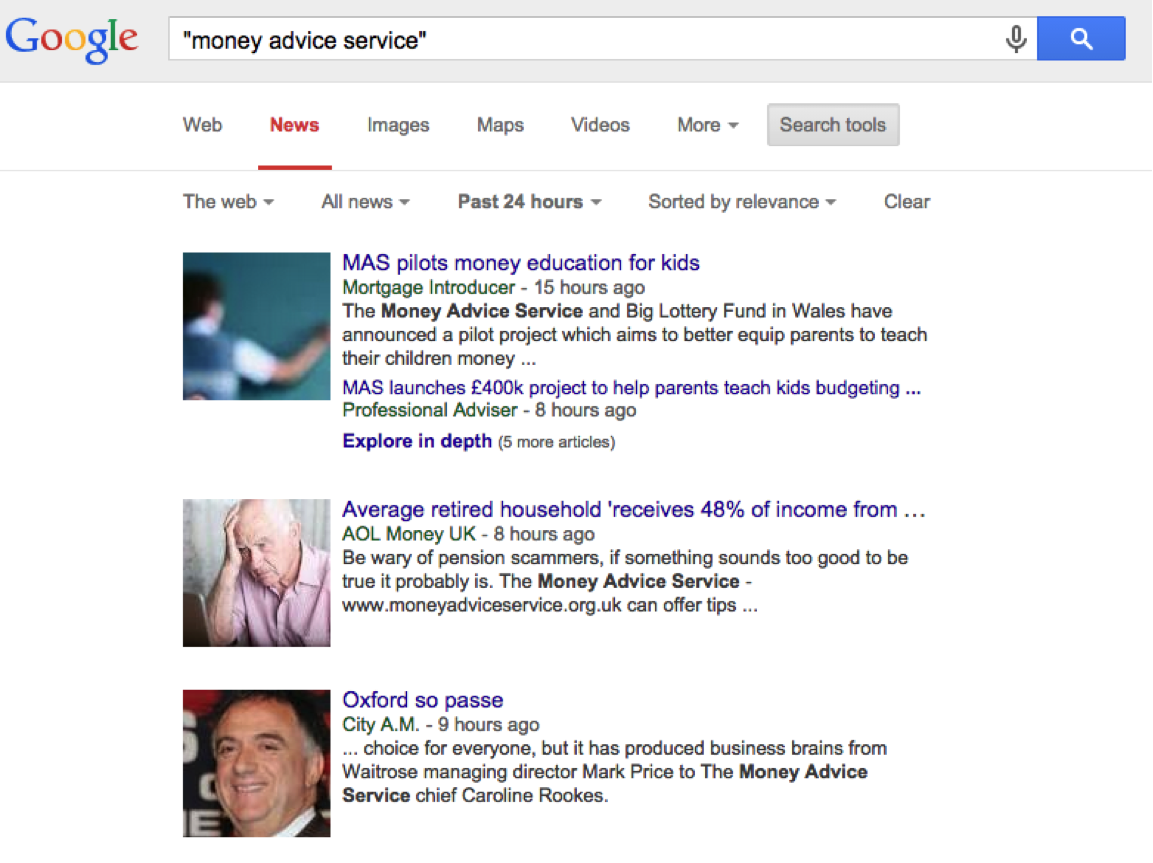
Once you’ve sifted through and found coverage relating to your campaign, it’s time to see if you can help optimise this for SEO by getting any missing links added in.
Of course, some publications will have a no link policy, however the vast majority will, and all that’s necessary to get one added in is an email asking nicely — something like this …
***
“Good morning,
I hope you’re well. I’ve just finished reading one of your articles entitled [insert title here] — an interesting and enjoyable read!
I’ve noticed during the article you mentioned [insert campaign or company name here]. I was wondering if you could add a link to [insert link here]. Hopefully this will give your readers additional information if they wish to research them further.
Let me know if you can help!
Kind regards,
Alex Jones”
***
The trick is to make the link sound beneficial to their readers, if you don’t get that across, there’s little chance that a journalist will take the time to go back and add one in.
2) Ask the media outlet for a social share.
There’s never any harm in asking your contact for a quick post via social media to accompany an article surrounding your campaign. Unsurprisingly, top publications will have an impressive social media following — a sizeable percentage of which may not head to their main website for weeks at a time, and would miss an article just placed online with no social media support.
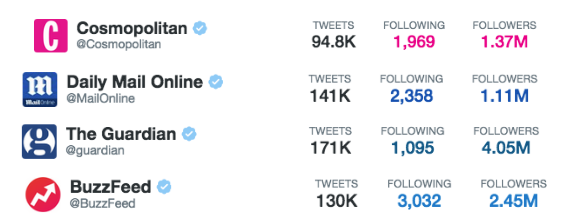
The best time to do this is straight after the article is live. That’s when a quick request to your contact to ask their social media manager for a share could make all the difference to the viral ambitions of your campaign.
3) Share a PR success story through your company blog.
A big publication running a story about your campaign is a major boost to your credentials. Why not show it off? PR is not just about brand awareness. It’s also about proving to your existing customers that you are a premier company and a trusted source of information.
If you have a blog where you typically share company news, write up a quick article to highlight the accomplishment. For example, after motoring magazine Auto Express picked up a survey ran by one of Zazzle Media‘s clients — Jennings Motor Group — they decided to share this success to their users in the form of a blog post online.
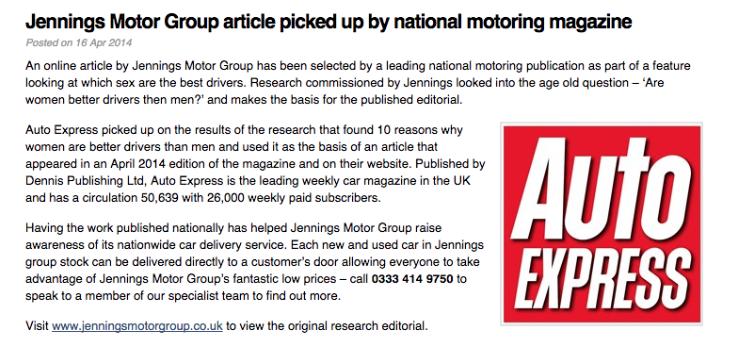
Not only does this give you a boost in the eyes of your existing customers, but for potential customers browsing the website, this creates a link between an editorial authority and your company. That can only be a good thing.
4) Turn national recognition into local coverage.
Local publications love installing pride into their communities. So when a business based in their area comes to national attention, it’s an opportunity to do just that.
All we have to do in PR is make the local journalists aware of the story, and make sure that local angle is emphasised. It’s a technique well utilised by some already, as the headlines below prove.
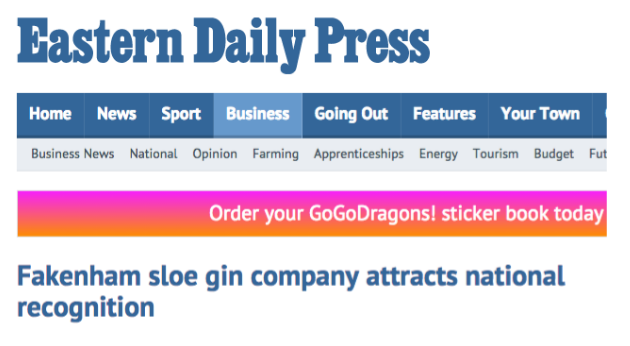

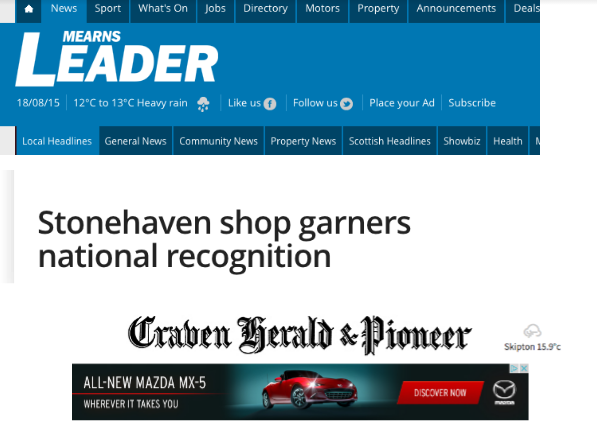
5) Experiment with Facebook Ads.
Let’s face it: The Facebook Ads platform has become a vital addition to any marketer’s arsenal, which includes people working in PR. Putting a social advertising budget behind a new campaign is a well-covered area already, so I want to talk to you about using this platform in a slightly different way …
We’ve already talked about the benefits of sharing a great piece of coverage from your company blog, and Facebook Ads serve as a great way of building on that strategy. The simplest way of doing this is using the “boost” function on a regular Facebook update. There are three audience types you can target: people who Like your page, people who Like your page and their friends, and people you choose through targeting.
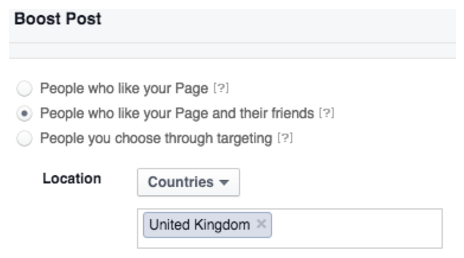
Boosting to “people who Like your page” is a great way to reinforce your authority to your existing audience. Likewise, boosting to “people who Like your page and their friends” gives you a chance to reinforce your authority and build your audience through existing channels.
The third option, however, allows you to try something different. By selecting a new audience to target, based on a selection of criteria, you have the chance to introduce your brand to a new audience by showing them a great piece of PR.
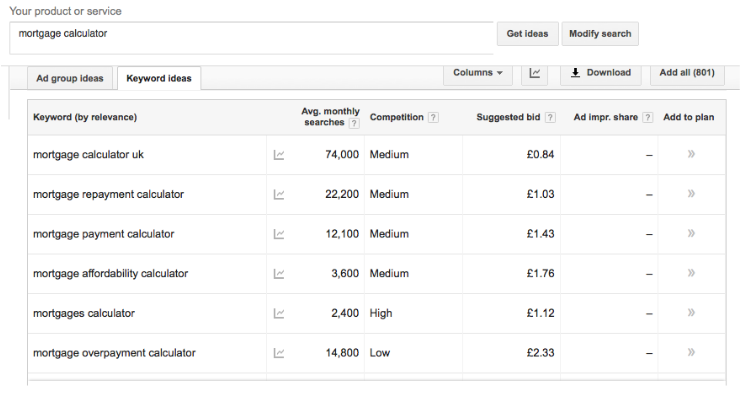
The idea behind this strategy is that a post including an article where a national publication talks kindly about your brand installs a sense of authority and creates a great first impression. And when you’re looking to introduce a new person to your brand, who doesn’t want to make a good first impression?
6) Explore Reddit and other related forums.
Internet forums can sometimes feel a bit outdated. However, there is still a lot of value to be gleaned from using these effectively — especially when it comes to Reddit.
Also known as the “front page of the internet,” Reddit is home to a variety of “subreddits” for almost every subject you can think of — from marketing to knitting.
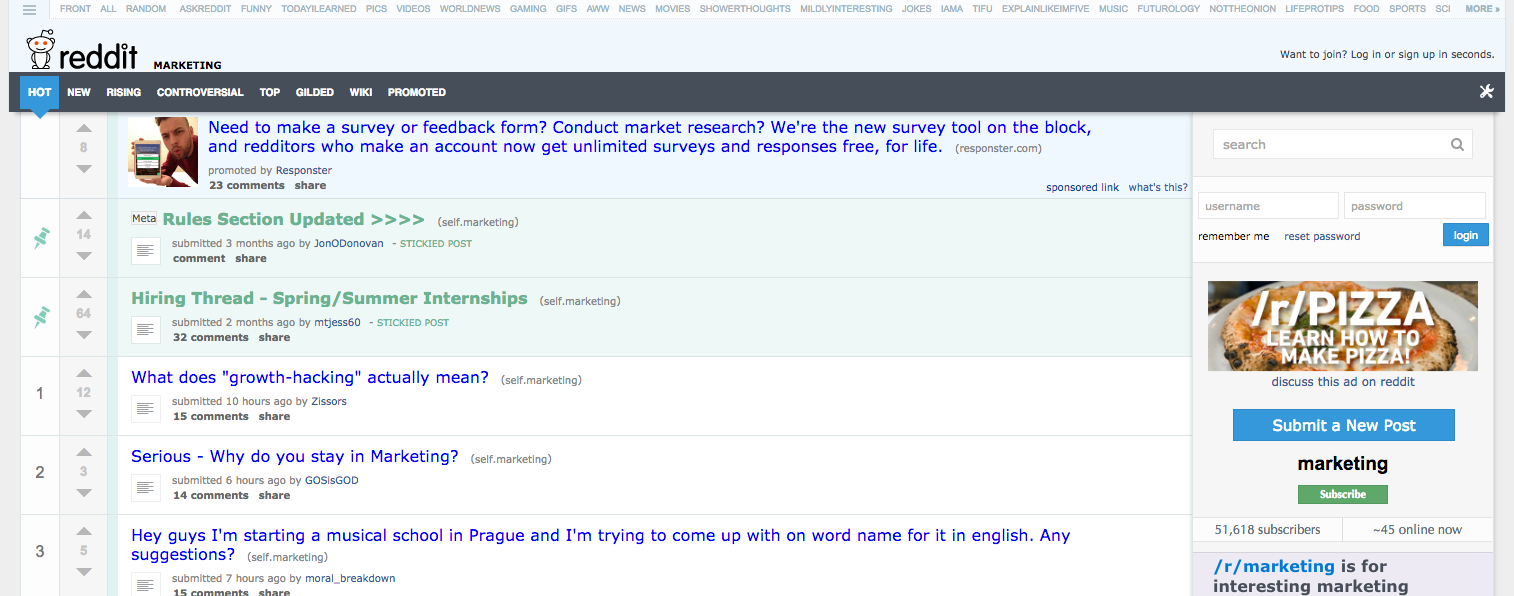
If you find a thread that aligns with your campaign, you can craft a post to draw more attention to your content. However, it’s important your post isn’t seen as too much of a plug or an advert, otherwise moderators will take it down. It’s also important that you choose the right thread to post in. Uninteresting or irrelevant posts will be “voted down” by users and could generate negative feelings towards your brand.
Get your audience right, however, and the rewards are potentially massive: Reddit saw over 200 million unique visitors last month (April 2015). Well worth a quick post, right?
7) Leverage PPC.
We’ve touched on how your social media team can help boost your campaign using Facebook Ads, now let’s talk about how the online advertising and PPC guys can join in.
From split testing titles of campaigns to focusing on raising brand awareness rather than driving sales, there are many interesting PPC strategies to be explored. For the sake of this example, we’ll be focusing on raising further brand awareness for an ongoing campaign. And because our goals are not primarily sales driven, we can target non-commercial terms that are (for the most part) a lot cheaper — even though they still have substantial search volume attributed to them.
When planning this type of strategy, you should lean on a keyword research tool such as Google AdWords to get started. Using this tool, you can uncover variations of a specific word or phrase to target, the average monthly search volume, and the suggested bid price. For this example, we’ve used they key term “Mortgage Calculator” relating to a campaign we ran with the Money Advice Service.
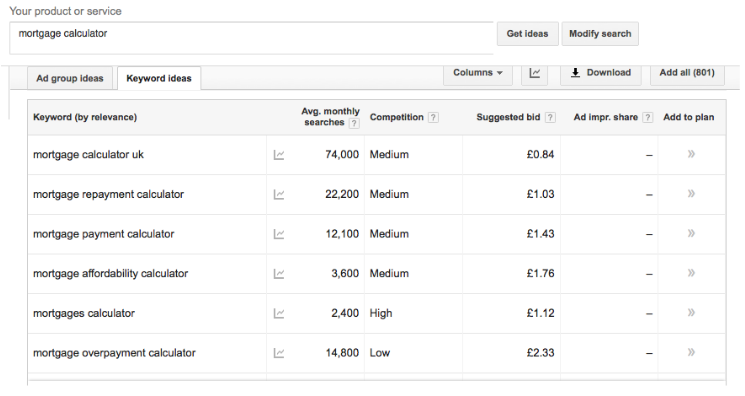 Once you’ve selected your keywords, it’s time to set a budget. As an example, I’ve set a relatively small budget of £50 (around $72) a day, which gives us the following daily forecast …
Once you’ve selected your keywords, it’s time to set a budget. As an example, I’ve set a relatively small budget of £50 (around $72) a day, which gives us the following daily forecast …
 Because the average cost-per-click on our selected keywords is so low — £0.29 or 42 cents — our estimated daily costs come in a lot lower than our daily budget accommodates for. This means we can proceed to target further keywords and remain within our budget … or save the remainder for a later date.
Because the average cost-per-click on our selected keywords is so low — £0.29 or 42 cents — our estimated daily costs come in a lot lower than our daily budget accommodates for. This means we can proceed to target further keywords and remain within our budget … or save the remainder for a later date.
Of course, how much you utilise PPC when working alongside PR depends on the budget available. For those with the means to do so, PPC can help you get your campaign in front of a highly targeted audience.
Have you got any more tips that can help optimise your PR efforts? Let me know in the comments below!
